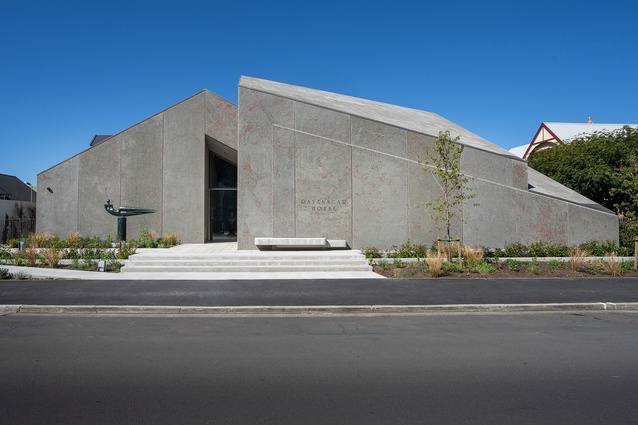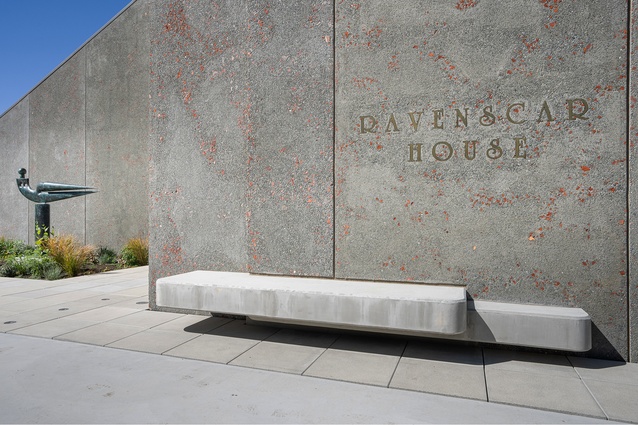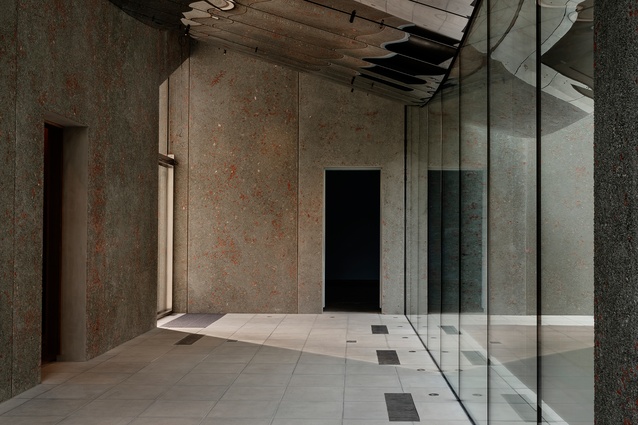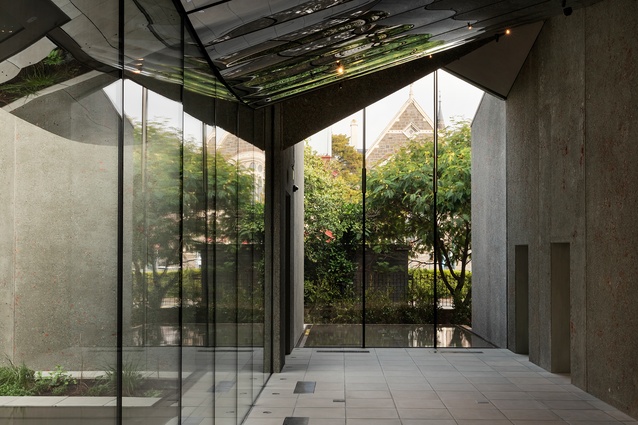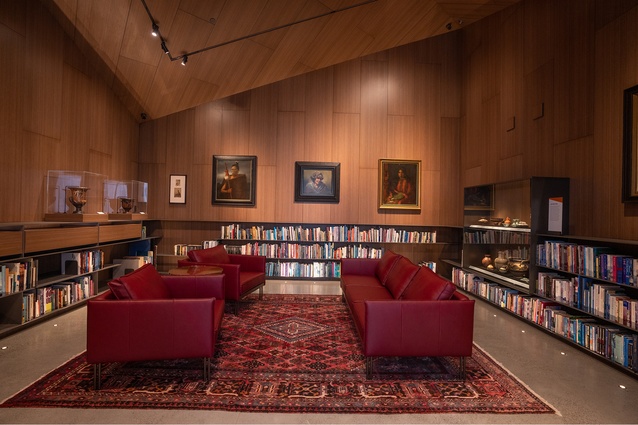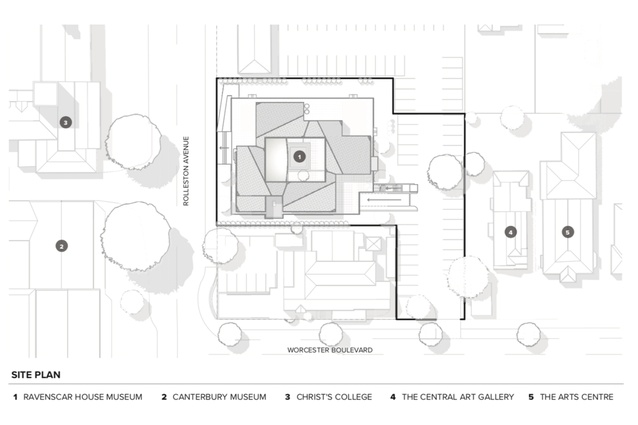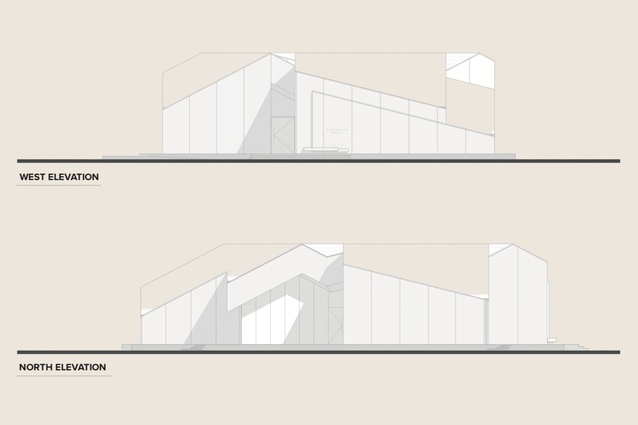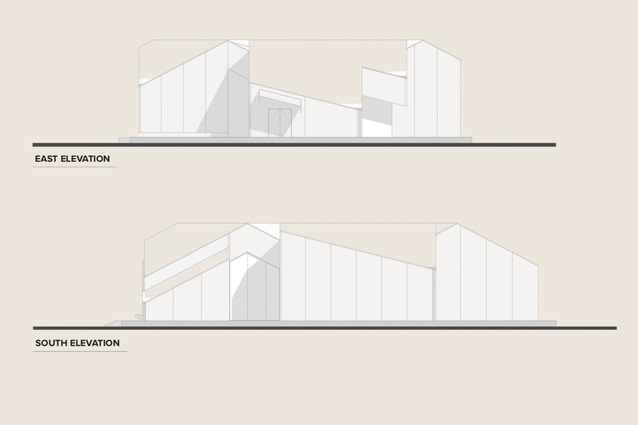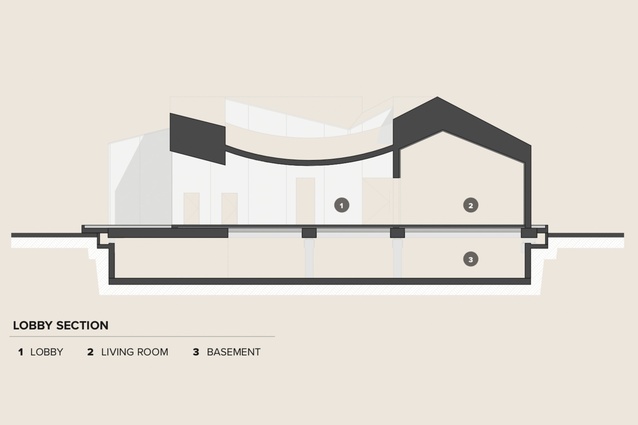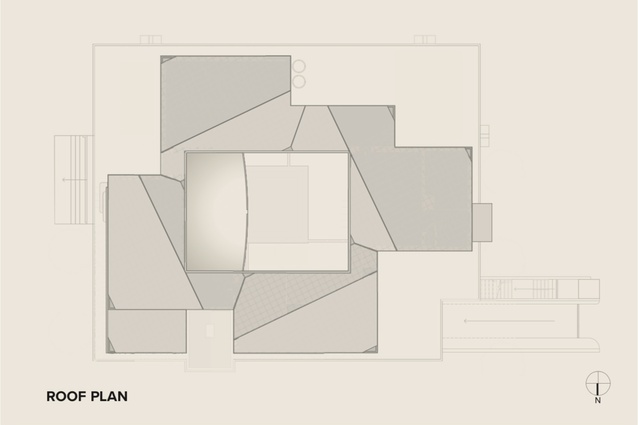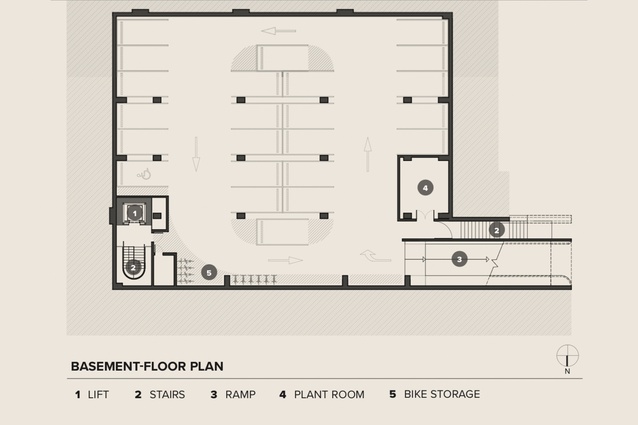A rock emerging from the depths
Jasper van der Lingen visits Patterson Associates Architects’ Ravenscar House Museum in Christchurch and finds a reawakening of the city’s past architectural pleasures.
Those of us who call Christchurch home and have lived here most of our lives tend to see our place and history as fundamentally split in two. A schism divides the time: before and after the 22 February 2011 Canterbury earthquake. Christchurch changed in so many ways on that terrible day, not least of which was in the approach to architecture. With around 80 per cent of our building stock in the central city destroyed or demolished in the frenzy of the quake’s aftermath, it was inevitable that the change would be profound and significant. Christchurch has a proud architectural history with real high points, including the magnificent Gothic revival buildings of the 19th century and the Christchurch modern style prevalent in the 1960s and 1970s. This was an architecture of substance and weight, built of masonry – stone, brick and concrete – suggesting a long-lasting, stable world. Post-earthquake, this changed and the sense of permanence was found to be an illusion as these buildings crumbled and became so badly damaged that insurance companies deemed them too expensive to repair. Post-quake, the mantra became build back light, touch the earth delicately, flex and roll with the punches rather than resist with supposed strength. Steel and glass became the new architectural language. Ephemeral-looking transparent buildings dominated the post-quake world as the rich architectural legacy of Christchurch became cut off from the new world, ignored and deemed largely irrelevant to our new paradigm.

Into this world, the Ravenscar House Museum and Art Gallery from Patterson Associates Architects, led by ex-Christchurch resident and architect Andrew Mitchell, has emerged. It is as if the city has reawakened to its past and earlier architectural pleasures. Ravenscar House is a solid, substantial place full of heft, shadow, mystery and imagination, thrust up from Christchurch’s past. Constructed of beautiful pre-cast concrete, securely grounded and folding up and over the roof, it appears monolithic and sculptural – a natural piece of rock emerging from the depths. There are no windows facing the street, only a cleft cut into the mass luring you in and not giving much away. We are no longer in a world of transparency and light but, rather, in one of rock faces and caves with shadow and mystery: a place to explore and delight in where things are hidden and need to be found, and a place in which the imagination can flourish and be entranced. The wonderful book In Praise of Shadows by Junichiro Tanizaki speaks beautifully about this type of magical experience. For some of us who grew up here, we were fascinated by the dark, mysterious nooks and crannies and magnificent halls and courtyards of the neighbouring Gothic revival Arts Centre. These are qualities largely forgotten in post-quake architecture and it is a delight to see them return here in a modern way.
To enter Ravenscar House, you pass through a deep, narrow opening in the concrete and emerge beside a tranquil central enclosed courtyard. Within this inaccessible courtyard, designed to look at and bring light into the heart of the building, is an impluvium pond reflecting rippling light on the draping mirror ceiling over the foyer. This experience brings back memories to me of the now sadly lost Canterbury Museum courtyard, with its own reflecting pond and hanging skeleton of a blue whale. This place of magic and mystery cut off from the rest of the world is unforgettable to those of us who encountered it
in our childhood.
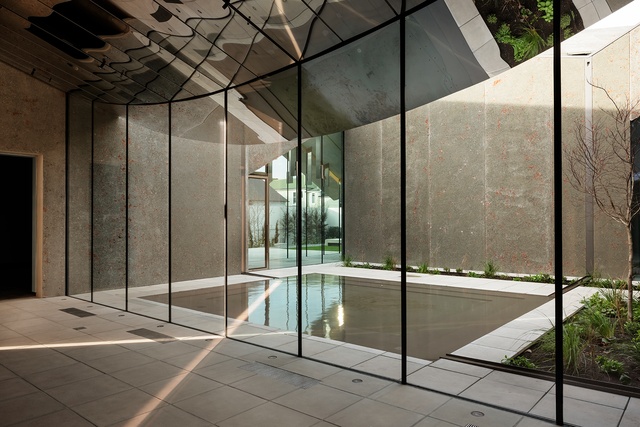
Ravenscar is also contemporary, not mimicking but building on the legacy of the architectural past. The concrete work is exquisite and a technical tour- de-force telling a story of the project’s genesis. The building is a very generous gift from local benefactors, the Wakefield family, who lived through the quake and experienced the trauma of seeing their house on the Port Hills destroyed, along with much of Christchurch. The house has been transformed, as if by alchemy, into this gallery. The concrete is composed of a mix of broken-up brick, stone donated by the neighbouring Arts Centre and granite from the courtyard of the Wakefield’s house. Traces of past existences are immortalised in seams across the surface. As it is in geology, where you can read the past in the strata and materials embedded in the rock, Ravenscar tells its past and story in its very fabric.
Its setting is highly significant, as well, surrounded by the best remaining examples of the Gothic revival architecture that formed the foundations of post- colonial Christchurch and survived the quake. Across the road is The Arts Centre, including the Great Hall on the corner: an architectural masterpiece by Benjamin Mountfort, beautifully framed in Ravenscar’s tall entry hall window. Directly across the road is the 19th-century Canterbury Museum and diagonally opposite is Christ’s College, another set of stone and concrete buildings produced by some of Christchurch’s best architects. It is hard to envisage a more heritage-sensitive environment in which to insert a contemporary building. Ravenscar responds well, setting up a dialogue where its faceted solid form, comprising rotated ridge lines, recognises the language of its neighbours but pushes it into new directions, suggesting the pre-quake architectural legacy of Christchurch still has relevance and can be built on in new and exciting ways.
One could question the dominant use of concrete in today’s world where environmental issues are at the forefront. Concrete has gained the reputation of being one of the bad-boy materials in our climate-change- conscious age, emitting carbon in its production. Yet, a building so obviously intended to last a long time should not be as susceptible to the impulses of our consumerist-driven time to have new, shiny things and discard the old dungers. Ravenscar is built on a car-park site where it became a requirement to retain these parks in order for the build to go ahead. They were placed in a basement area under the museum, which gave the opportunity to base-isolate the building. This built-in resilience and the fact that this solidly built concrete structure will only improve with age and, hopefully, be embraced by the community, should mean it will be here for a very long time, like its illustrious companions that surround it. This longevity offers inherent sustainability, as the most unsustainable architectural act of all is to demolish a reusable existing structure and replace it with something new.

Ravenscar House is an ode to the Wakefield family and their experience during the quake. Fragments of their demolished house are exhibited amongst their own art collection in the various domestically scaled exhibition rooms reminiscent of their old house. You move in a circular route, passing from room to room, each a particular memory of a piece of their past home. The spaces are proportioned to mimic these places; you start with the dining room, then the bedroom and living room, before finishing in the library/media room. All these rooms are windowless, internal enclosures, filled with art and memorabilia, whereas the links between are fully glazed transitions where you are reconnected with the outside. Exploring the spaces is an unusual feeling. You sense you are participating in a highly personal experience now exhibited for all to see. Wall panelling from the Wakefield’s house, drawings of their furniture, personal art and books through to the fragments of the past house embedded in the walls make it feel like a frozen lament for a lost domestic past. Mausoleum-like almost, it is a place of personal remembrance in the heart of our city gifted to us all to share and look after. Is it, in a way, a stand-in for the shared memory many of us have of the quake’s trauma? Is it an indulgence of a family to immortalise their personal experience or is it simply a generous donation back to a city they obviously love, which we can now all share and enjoy?
Whatever your views are, we are left with a wondrous piece of architecture that will become
a welcomed participant in the ongoing story of our place. Perhaps it is too much ambition to put on a single building but, in some ways, it feels as if it is straddling the break the earthquakes caused and helping heal the architectural split personality of our city. It is reaching back and acknowledging the past while looking forward with sturdy confidence.

